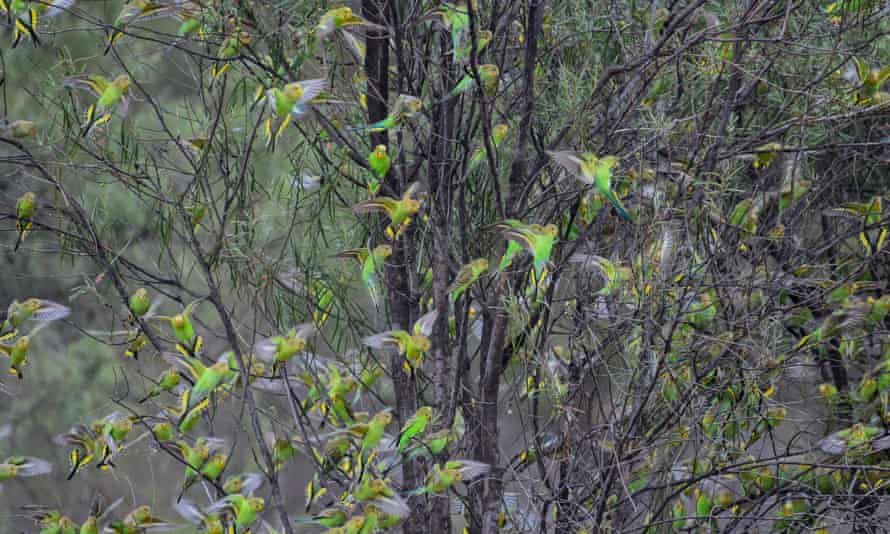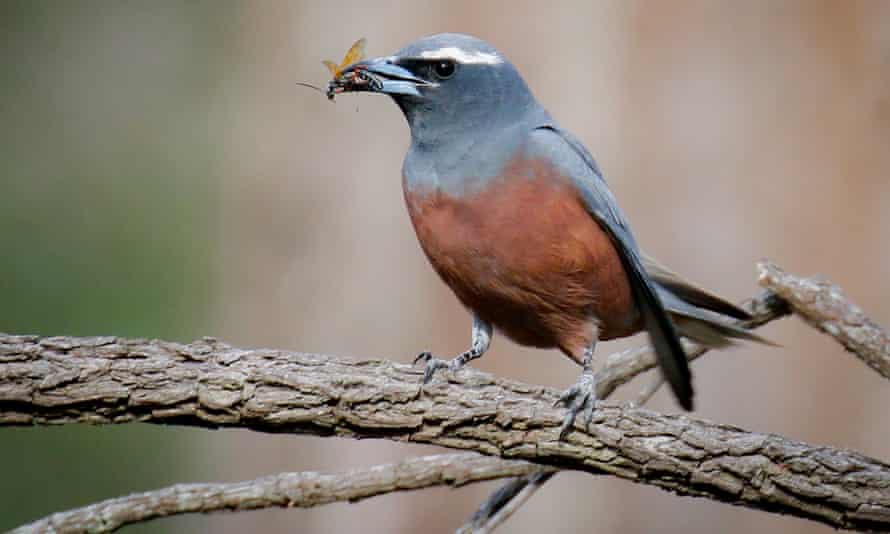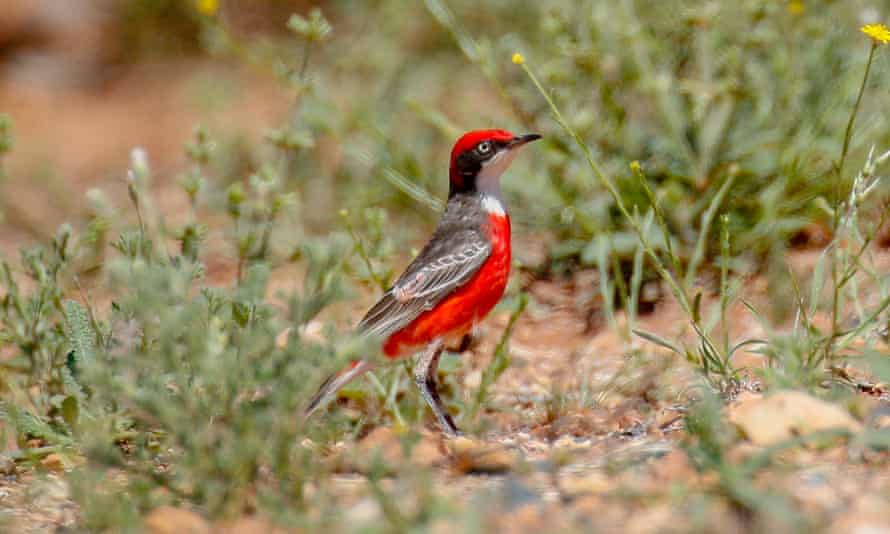Many people think that budgerigars are only found in cages. More people think that they are blue. The truth couldn’t be farther away on both accounts. These flamboyant but diminutive lime-green parrots are the quintessential example of having freedom to roam, which is exactly what they do in the vast island continent of Australia. They occur naturally nowhere else in the world. And if you live in New South Wales and want to see them for yourself without having to venture into the central deserts, now is the time.
The Australian environment is known for its “boom-bust” cycle of nature, largely based on the vagaries of inland rainfall. Whereas other continents experience more predictable climate and rainfall patterns, Australia’s climate is far more irregular. Hence when the rains do come at the end of a prolonged dry (bust) period, the boom starts.

Some species in Australia have adapted to see out the hard times by literally going underground, but this is an option mostly for plants (via the seed-bank), insects and some vertebrate animals like the water-holding frog. Other animals such as kangaroos can suspend reproduction during lean times.
Birds generally have a different strategy, which is based on their one big advantage over other animals – pure mobility. With the capacity to fly long distances, a good proportion of Australian birds have adapted to wander the landscape looking for the region with the best conditions. The strategy is simple – if the habitat is not productive, look for some that is.
Plenty of birds (and other animals) do this when habitat regularly becomes unproductive (generally in the cooler months). This is known as migration. Others are nomadic, responding to real-time conditions as opposed to season. Others make a migration of sorts, but their destination is dictated by conditions in the broader landscape. I call these “predictable nomads”, and the best examples are possibly the most mobile of all our terrestrial birds – the white-browed and masked woodswallows.

Some bird species are so nomadic that neither birdwatchers nor scientists can predict where they are at any given time. These species however are usually confined to the arid interior and are typified by rare members of the parrot family; the best examples being princess and scarlet-chested parrots. But even when these are flourishing, it still requires the observer to travel to inland Australia to catch a glimpse, often of just a flying bird, or perhaps a small flock.
Conversely, there are some birds that are abundant and easily found when conditions are good, including within striking distance of major regional centres and even capital cities. Budgerigars (OK, let’s call them “budgies”) are a great example of such an abundant bird that can escape the eyes of people because they generally occur in the broader arid/semi-arid zone – except when it is so dry that they are forced towards the coast, or if conditions are too good to resist elsewhere.

With online bird-recording portals we can track the movements of these birds. Using NSW as an example, in 2019 there was barely a budgie reported anywhere in the state and of the few reports there were, nearly all were of just a handful of individuals. In the latter half of 2020, following inland rain, reports of budgies lit up on these portals like a Christmas tree. By early spring there were reports of flocks in the hundreds and birders flocked to the north-west of NSW to see these and other inland birds such as crimson chats and pied honeyeaters. All of them were breeding and by the time the birdwatchers had arrived, the budgies had already had their first clutch of chicks and were nesting again.
The boom was on.
The fact is that the boom had started for coastal birds much earlier when drought-breaking rains arrived in late summer. Species that are neither nomadic nor migratory responded because there was an explosion of bird food, such as seeds and insects. Birds that would normally be nesting in spring were now dropping eggs in autumn – a high-risk action with the onset of winter looming. But these birds knew there would be a reliable food source and successfully raised young at a time they wouldn’t usually be contemplating such a thing. Remarkably, some birds that would normally have migrated north stuck around for the winter too. If there’s plenty of food, then why not?

This is all a testament to how Australian birds have adapted to be guided by conditions, not season. It is wonderful to witness. I would highly recommend a visit to western NSW while the boom is still unfolding. The biggest flocks in NSW have been seen in the NSW mallee country around Mount Hope, but anywhere west of the Great Dividing Range is worth keeping an eye out for these little green gems.
o Mick Roderick is the NSW woodland bird program manager at BirdLife Australia. He is based in Newcastle, NSW and is the vice-president of the Hunter Bird Observers Club, sits on the NSW Ornithological Records Appraisal Committee and runs pelagic (seabird) trips out of Port Stephens